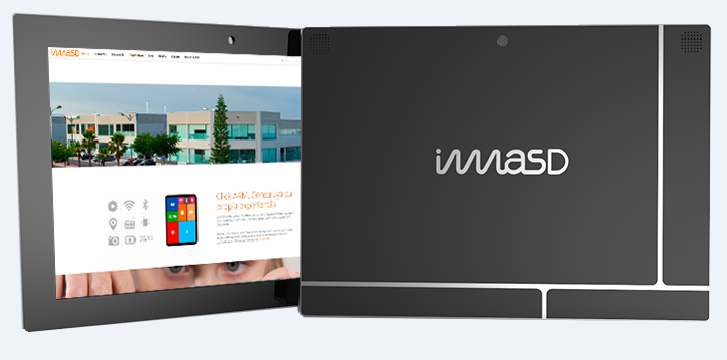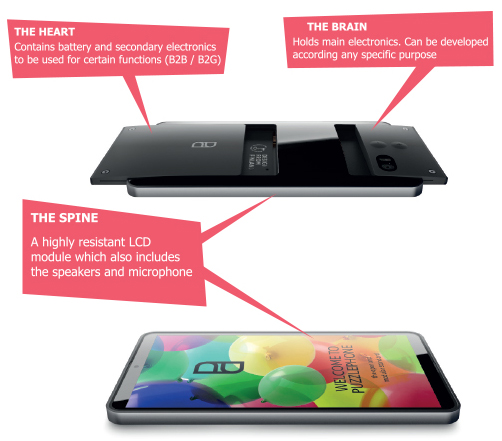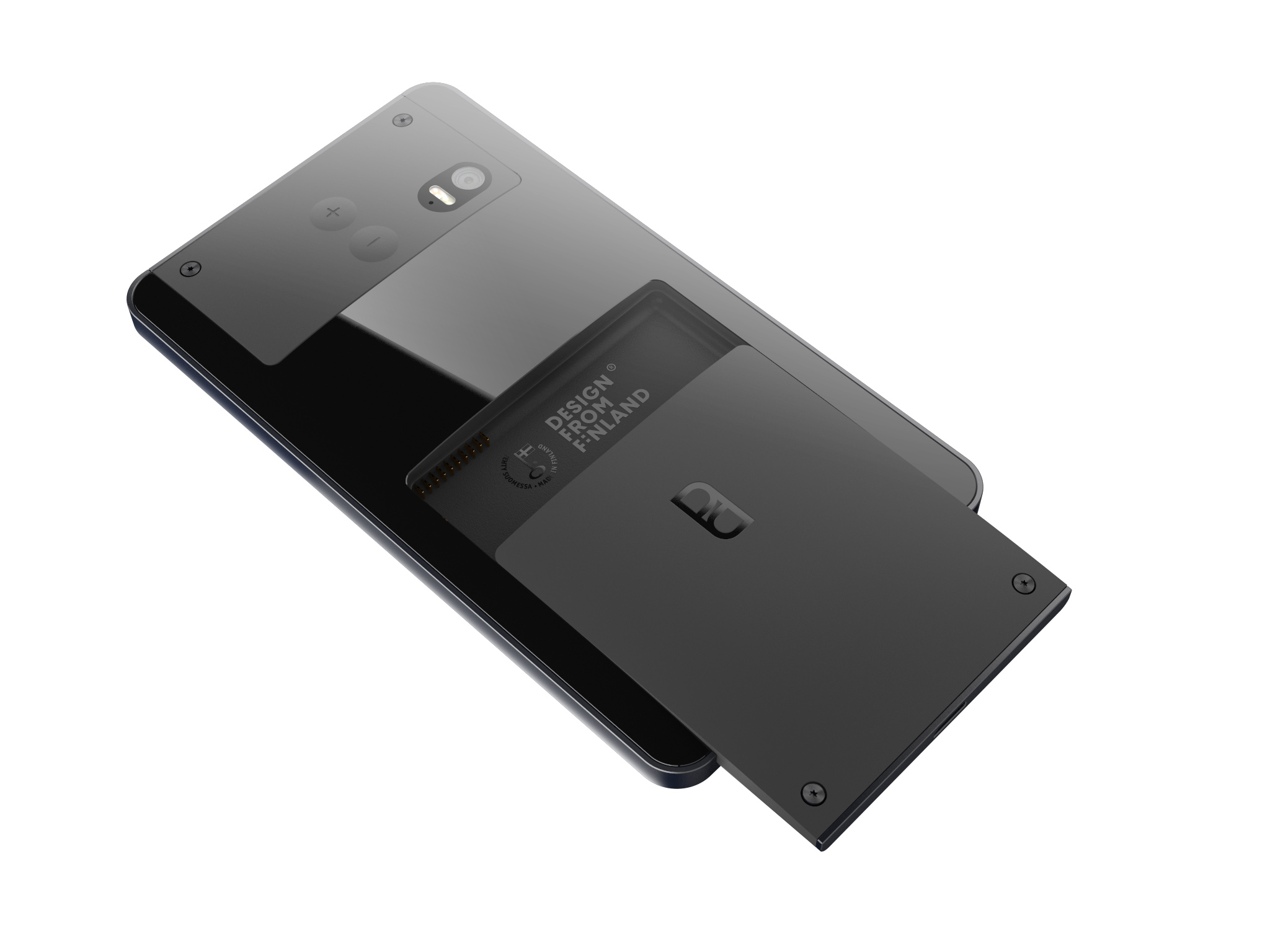All About Click ARM, The Darkhorse In The Modular Mobile Hardware Race
What's it called when different people have the same idea at the same time? Synchronicity? Multiple discovery? In any case, that's what is happening in the world of modular mobile devices, it seems.
Google is the standard-bearer with its ATAP-housed Project Ara, but there are others poking at the same idea, such as Vsenn. One company that is far along in its work in modular mobile hardware is ImasD Technologies.
Just recently, the company introduced the Click ARM One, a modular tablet set to make its consumer debut sometime between June and September 2015 for the price of $313 USD. The "ARM" portion of the name refers to the company's "Advanced Removable Modules" technology (not that ARM), which enables modules to be switched out when a certain component becomes obsolete.
Buying Into The Modular Paradigm
Pedro Peláez, director general of ImasD Technologies, spoke with Tom's Hardware about its current project, reporting that his company, which resides in Spain, is rather small, employing six hardware engineers and four software engineers. These ten people have managed to shake up the tablet sector with the Click ARM One by offering a device that will seemingly never grow obsolete.
Peláez explained that Click ARM is a hardware and software platform that allows the company to develop different types of products as thin as 4.5 mm that are based on modules and core modules, from small GPS devices to smartphones and tablets and beyond. To date, the company has created five motherboards ranging from 2.8 inches to 7 inches, one of which is the CKHUB101 that's used in the Click ARM One modular tablet.
When asked if the company had any plans to launch a Kickstarter project to help with the development funds, Peláez said that the company has found the crowdfunding service difficult to use in Spain. Everything developed up to this point has been funded by the company's own revenues.
The first modular tablet prototype was developed in 2012 using an Allwinner processor. The company spent the next two years ironing out problems in developing a modular platform, a task that has cost some $2 million euros.
Get Tom's Hardware's best news and in-depth reviews, straight to your inbox.
"You need to solve the hardware problem, differential signals, make compatible all processors, the modules' connectivity, what kind of platforms do you choose, integrity of that modularity," he told Tom's. "All these things need time and research to solve it."
The Modules, Present And Future
You'll be able to choose from a variety of different SoC modules in a tablet you configure, including low-profile Cortex M3-based options (such as the MAX32600) or the Exynos 4, the Exynos 5, the Exynos A7, the IMX6 family and Intel Baytrail SoCs.
As we stated in an earlier report on Click ARM, the current offering is the CK One Core, which offers an Exynos 4412 SoC with 2 GB of RAM. Other modules available for the Click ARM One include a 16 GB storage module, an I/O hub that offers Wi-Fi (both 2.4 GHz and 5 GHz), Bluetooth 4.0, HDMI, and two USB ports. The sole display option at present is Samsung-made 10.1-inch multitouch display with a 1280 x 800 resolution. At some point, you'll also be able to buy a "CK Bay" module that offers mini PCIe slots.
It is true that at present, Click ARM isn't delivering any extra modules here, which cuts against the whole point of modularity. But the company promised more options soon, as early as Q2 2015, with more coming Q4 2015.
Here's the list, in a handy table format:
| Click ARM Cores (2Q 2015) | Click ARM Cores (4Q 2015) | Click ARM Mini-PCIe Modules (Q2 2015) | Click ARM Misc. Modules (Q2 2015) | Click ARM Misc. Modules (Q4 2015) |
|---|---|---|---|---|
| Exynos 4412QCore1.6 GHz +1 GB RAMDDR3 | Exynos 3250Dualcore1 GHz +512 MB RAMDDR3 | (All Carriers) 3G/GPSHDSPA+GPS+AGPSMulticonstellationBasaded in MKT | MemoryModules:16/32/64/128GB eMMC5.0/5.5 | InductibleChargeModule |
| Exynos 4412QCore1.6 GHz +2 GB RAMDDR3 | Exynos 3250Exacore1 GHz +1 GB RAMDDR3 | IMASD OMV3G/GPSHDSPA+GPS+AGPSMulticonstellationBasaded in MKT | M2M/IOTModule:All CarriersGPRS/GSM/CDMAwith Web Serverand BI Communication | ArduinoCompatibleModule |
| Intel BaytrailQcore2.2 GHz +2 GB RAMDDR3 | Exynos 5260Exacore2.2 GHz +2 GB RAMDDR3 | CanBusModule | M2M/IOTModule:ImasD OVMGPRS/GSM/CDMAWith Web Serverand BI Communication | OscilloscopeModule |
| Row 3 - Cell 0 | Exynos 5260Exacore2.2 GHz +4 GB RAMDDR3 | RS232/RS485/ TTL Communication Module | RadioModules:Wireless802.1xWi-Fi 2.4 GHzCompatible | EthernetModule |
| Row 4 - Cell 0 | Row 4 - Cell 1 | Communication Module: Ethernet plus USB 3.0 | RadioModules:Wireless802.1xWi-Fi + BT LE2.4 GHz / 5.0 GHzCompatible | Row 4 - Cell 4 |
The modules communicate via fairly standard USB, SPI, GPIO, I2C and UART I/O, and each socket that modules connect to has its own digital identifier for software recognition. Further, each module has an EPROM on it replete with the data necessary to communicate with the host mainboard. Peláez indicated that Click ARM developers will have the option of creating their own modules that will be certified by ImasD Technologies.
Custom OS
One of the big features surrounding the Click ARM platform is the software, which is based on Linux. Peláez indicated that hardware partners will be able to make their own OS by choosing modules and their corresponding software listed on the Click ARM website. All they supposedly do is hit "compile," and the custom operating system will be complete in around 5 hours.
"The auto-compiler platform will have more than one OS depending [upon] the modules you will use," he told Tom's. "Android is the most used on the consumer market and we know it's very good. Ubuntu is needed by industrial and maker users." He said that he wasn't sure if Tizen would be sufficiently supported, but Click ARM will implement Sailfish OS and others.
There's A Phone, Too
In addition to the modular tablet, ImasD Technologies has had a hand in developing Circular Device's modular smartphone, the PuzzlePhone. But here's a twist: PuzzlePhone modules can be used in the Click ARM One tablet, and vice versa.
"The PuzzlePhone is the friendly version of our modularity," he said. "Yes the modules are compatible. [They] use [the] same core on the phone and tablet."
We've covered the PuzzlePhone before, but the interoperability of the tablets modules is certainly noteworthy, because it means that all of the aforementioned SoC modules could serve as the Core of a PuzzlePhone build.
Circular Devices and ImasD are working with the likes of Grant4Com, AT&S and Fraunhofer IZM to develop and certify more modules for the PuzzlePhone.
What It All Means
From what we can tell, Click ARM has a ways to go before it can go toe-to-toe with Google on modular mobile devices -- but then again, Google hasn't even launched its pilot program yet, while Click ARM is selling a real product, such as it is. Even so, most of the Click ARM modules are still in development, and ImasD seems to be trying to figure out where to market its innovative platform. Most of its sales are coming from B2B markets (20,000 units this past year); the modular tablet is sort of for ODMs and OEMs, but it can be for individual consumers, too. Google, by contrast, seems to more fully understand where it wants to go with Project Ara.
Of course, Project Ara is a modular smartphone, not a tablet, so it's really competing with Circular Device's PuzzlePhone more than anything. But mobile modularity is less about companies competing with one another, and more about solving a problem that so many consumers don't realize needs solving. People are mostly happy with their closed-system smartphones.
However, as subtle market shifts make the smartphone more and more of a primary computing device, the idea of a modular, upgradable, customizable mobile device is needed. For many users in developing markets, companies such as Lenovo are finding that customers can only afford one computing device. That one device is often a large (relatively inexpensive) tablet with VoLTE capabilities. A modular tablet would go over rather well in those markets, it seems.
As we mentioned up top, the Click ARM One modular tablet is available for approximately $313 USD on the company's site. The PuzzlePhone will be available by the end of the year.
ImasD Technologies and Circular Devices are not household names, but they are companies to pay attention to as modular mobile devices make a play for market share in the near future.
Follow us @tomshardware, on Facebook and on Google+.
Seth Colaner previously served as News Director at Tom's Hardware. He covered technology news, focusing on keyboards, virtual reality, and wearables.





